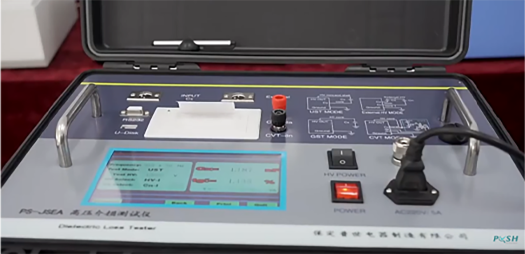 English
English



-
 Afrikaans
Afrikaans -
 Albanian
Albanian -
 Amharic
Amharic -
 Arabic
Arabic -
 Armenian
Armenian -
 Azerbaijani
Azerbaijani -
 Basque
Basque -
 Belarusian
Belarusian -
 Bengali
Bengali -
 Bosnian
Bosnian -
 Bulgarian
Bulgarian -
 Catalan
Catalan -
 Cebuano
Cebuano -
 China
China -
 China (Taiwan)
China (Taiwan) -
 Corsican
Corsican -
 Croatian
Croatian -
 Czech
Czech -
 Danish
Danish -
 Dutch
Dutch -
 English
English -
 Esperanto
Esperanto -
 Estonian
Estonian -
 Finnish
Finnish -
 French
French -
 Frisian
Frisian -
 Galician
Galician -
 Georgian
Georgian -
 German
German -
 Greek
Greek -
 Gujarati
Gujarati -
 Haitian Creole
Haitian Creole -
 hausa
hausa -
 hawaiian
hawaiian -
 Hebrew
Hebrew -
 Hindi
Hindi -
 Miao
Miao -
 Hungarian
Hungarian -
 Icelandic
Icelandic -
 igbo
igbo -
 Indonesian
Indonesian -
 irish
irish -
 Italian
Italian -
 Japanese
Japanese -
 Javanese
Javanese -
 Kannada
Kannada -
 kazakh
kazakh -
 Khmer
Khmer -
 Rwandese
Rwandese -
 Korean
Korean -
 Kurdish
Kurdish -
 Kyrgyz
Kyrgyz -
 Lao
Lao -
 Latin
Latin -
 Latvian
Latvian -
 Lithuanian
Lithuanian -
 Luxembourgish
Luxembourgish -
 Macedonian
Macedonian -
 Malgashi
Malgashi -
 Malay
Malay -
 Malayalam
Malayalam -
 Maltese
Maltese -
 Maori
Maori -
 Marathi
Marathi -
 Mongolian
Mongolian -
 Myanmar
Myanmar -
 Nepali
Nepali -
 Norwegian
Norwegian -
 Norwegian
Norwegian -
 Occitan
Occitan -
 Pashto
Pashto -
 Persian
Persian -
 Polish
Polish -
 Portuguese
Portuguese -
 Punjabi
Punjabi -
 Romanian
Romanian -
 Russian
Russian -
 Samoan
Samoan -
 Scottish Gaelic
Scottish Gaelic -
 Serbian
Serbian -
 Sesotho
Sesotho -
 Shona
Shona -
 Sindhi
Sindhi -
 Sinhala
Sinhala -
 Slovak
Slovak -
 Slovenian
Slovenian -
 Somali
Somali -
 Spanish
Spanish -
 Sundanese
Sundanese -
 Swahili
Swahili -
 Swedish
Swedish -
 Tagalog
Tagalog -
 Tajik
Tajik -
 Tamil
Tamil -
 Tatar
Tatar -
 Telugu
Telugu -
 Thai
Thai -
 Turkish
Turkish -
 Turkmen
Turkmen -
 Ukrainian
Ukrainian -
 Urdu
Urdu -
 Uighur
Uighur -
 Uzbek
Uzbek -
 Vietnamese
Vietnamese -
 Welsh
Welsh -
 Bantu
Bantu -
 Yiddish
Yiddish -
 Yoruba
Yoruba -
 Zulu
Zulu
High Voltage Injection Testing Techniques and Best Practices for Electrical Systems
High Voltage Injection Test A Comprehensive Overview
High voltage injection testing is a crucial procedure employed in electrical engineering, particularly in the fields of power systems, electrical equipment testing, and insulation assessments. This method is essential for evaluating the integrity and performance of electrical systems under high-voltage conditions, providing insights into their reliability and safety.
Understanding High Voltage Injection Testing
High voltage injection tests are conducted to determine how well electrical components—such as cables, transformers, circuit breakers, and insulators—can withstand high voltage without failing. The primary purpose is to identify any weaknesses in insulation materials or potential faults that may lead to catastrophic failures in real-world operating conditions.
During the test, a controlled high voltage is applied to the equipment under evaluation. This voltage level often exceeds the normal operating voltage, simulating extreme electrical conditions that the equipment might encounter over its lifetime. By pushing the system beyond its standard limits, engineers can identify insulation breakdowns, partial discharge, and other anomalies that may not be apparent during routine operation.
Importance of High Voltage Injection Testing
The significance of high voltage injection tests cannot be overstated. Here are a few reasons why they are vital
1. Safety Assurance Ensuring that equipment can handle unexpected high-voltage conditions is critical for the safety of both personnel and infrastructure. Failure to identify weaknesses may result in dangerous accidents or equipment failure.
2. Performance Evaluation Testing under high voltage allows engineers to closely observe the performance of insulation materials. This data is invaluable for improving design and manufacturing processes.
3. Standards Compliance Many industries are governed by strict regulations regarding electrical equipment testing. High voltage injection testing helps manufacturers comply with these standards, ensuring products are safe and reliable.
high voltage injection test

4. Preventive Maintenance By identifying potential failures before they occur, high voltage injection testing contributes to proactive maintenance strategies. This approach is crucial in minimizing downtime and repair costs associated with unexpected equipment failures.
Conducting a High Voltage Injection Test
The process of conducting a high voltage injection test involves several steps. First, the equipment is prepared by disconnecting it from the power source and ensuring all safety protocols are followed. Next, high voltage cables and monitoring instruments are connected to the test system.
The voltage is then gradually increased to the predetermined level while monitoring the system for any signs of failure or abnormal behavior, such as arcing, sparking, or excessive heat. If the equipment successfully endures the test without any issues, it is deemed capable of safely operating under high voltage conditions.
Challenges and Considerations
Despite its advantages, high voltage injection testing comes with its challenges. One major concern is ensuring the safety of personnel conducting the tests. High voltage testing poses inherent risks, and stringent safety measures must be employed, including the use of proper equipment, personal protective gear, and adherence to safety protocols.
Additionally, interpreting test results can be complex. Engineers must be well-versed in the behavior of electrical systems under high voltage conditions to accurately assess results and make informed decisions regarding design improvements or necessary repairs.
Conclusion
High voltage injection testing plays a vital role in ensuring the safety, reliability, and performance of electrical systems. By simulating extreme conditions, engineers can identify vulnerabilities in insulation and other critical components before they lead to serious issues. As the demand for safe and efficient electrical infrastructure grows, the importance of high voltage injection testing will only continue to increase, paving the way for advancements in electrical engineering and enhancing the reliability of power systems worldwide.
-
Testing Equipment Industry Sees Major Advancements in 2025: Smart & Precision Technologies Lead the WayNewsJun.06,2025
-
Applications of Direct Current Generators in Renewable Energy SystemsNewsJun.05,2025
-
Hipot Tester Calibration and Accuracy GuidelinesNewsJun.05,2025
-
Digital Circuit Breaker Analyzer Features and BenefitsNewsJun.05,2025
-
Benefits of Real-Time Power Quality Monitoring Devices for Industrial EfficiencyNewsJun.05,2025
-
Earth Fault Loop Testing in High-Rise Building Electrical SystemsNewsJun.05,2025



